Exploring the vast landscape of Korean noodles, you'll discover an incredibly varied approach to noodle dishes. Take mul naengmyeon, for example, a refreshing cold noodle dish that's a perfect escape from the summer heat. It cools you down with its icy broth and chewy buckwheat noodles, balancing simplicity with a depth of taste.
On the other hand, you've got kalguksu, a comforting bowl of warmth, like to a hug on a cold day. This dish features knife-cut wheat flour noodles swimming in a hearty, homemade broth, typically laden with vegetables and seafood or meat.
While they're both staple Korean comfort foods, comparing naengmyeon vs. kalguksu couldn't be much more different. But whether you're craving the cool zest of naengmyeon or the rich, savory embrace of kalguksu, both dishes are sure to win you over in one season or another.
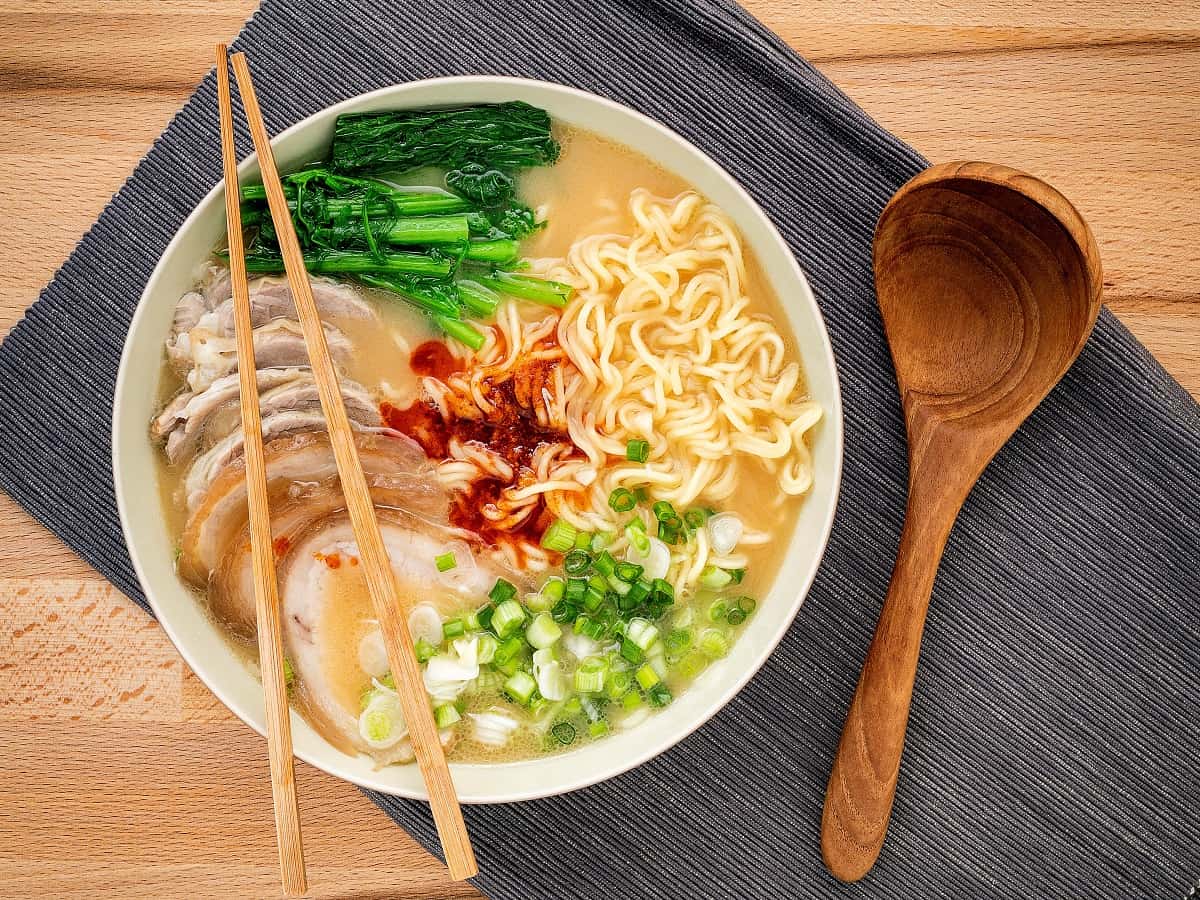
Jump to:
🧐 Historical Context
When you explore the origins of Korean food, you'll find that naengmyeon and kalguksu both have significant historical backgrounds rooted in Korea. After all, this is a culinary world where every dish tells a story, with flavors as rich as the culture itself.
Naengmyeon began as a winter dish in North Korea, typically made with buckwheat noodles and served in a tangy iced broth. It may be surprising to learn that what you'd now enjoy as a refreshing summer meal actually has a cold-weather heritage.
On the other hand, kalguksu, which means "knife noodles," is a heartier comfort food with a brothy base, usually incorporating ingredients like shellfish or chicken. This South Korean noodle dish is beloved for its fresh hand-cut noodles and the skill involved in its preparation.
| Dish | Origin Region | Key Ingredient | Preferred Season |
|---|---|---|---|
| Naengmyeon | North Korea | Buckwheat noodles | Summer |
| Kalguksu | South Korea | Wheat flour noodles | Year-round |
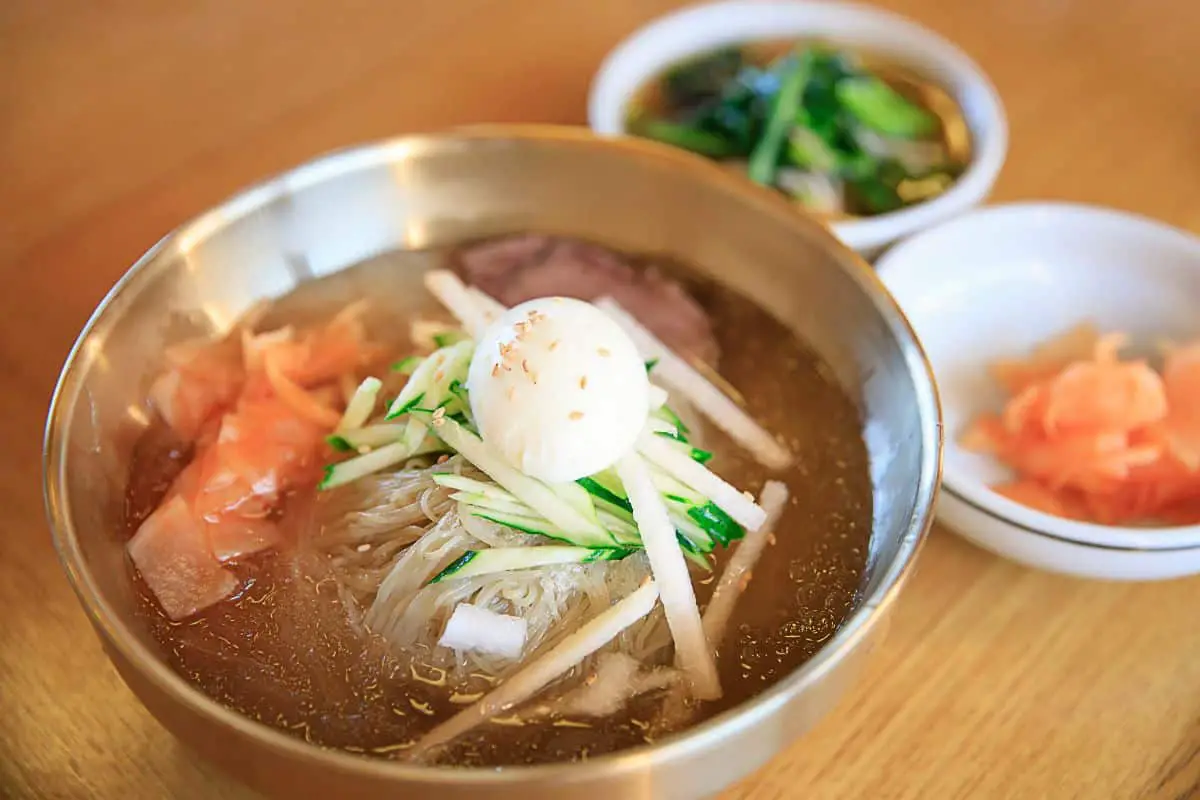
🍥 What is Naengmyeon?
Origins and Cultural Significance
Naengmyeon started as a winter delicacy in North Korea but has become a year-round favorite throughout the peninsula, especially during the scorching summer in Korea.
This Korean cold noodle dish embodies a fusion of taste and tradition, revered for its ability to cool you down and now a vital part of Korea's culinary heritage.
Varieties of Naengmyeon
There are mainly two types of naengmyun you'll encounter: mul naengmyeon, served in a tangy iced broth with literal crushed ice at the base, and bibim naengmyeon, which is served cold but without ice and mixed with a spicy gochujang sauce.
Bibimnaengmyun is also often served with a blended thin noodle made with wheat and buckwheat, so always ask befor eordering, if oyu have a gluten intolerance.
Each type delivers a unique blend of flavors and textures, perfect for pairing with summer meals, but they taste quite different. Both the spicy naengmyun and the mild naengmyun are served cold with radish, cucumber, sesame seeds, and half a boiled egg, but the differences in heat and noodle types makes their impact on a meal very different.

🍜 What is Kalguksu?
Origins and Cultural Significance
Imagine stepping back into the land of one Korea, where kalguksu originated in the south of the country. This dish is steeped in tradition, often enjoyed during the harvest season as a symbol of the fruits of diligent labor. It's not just nourishment; it's a celebration of Korean culture on your plate.
Handmade Noodle Excellence
You haven't truly experienced kalguksu until you've tasted the handmade noodles signature ot the dish.
Each strand is a testament to the excellence of Korean culinary craftsmanship, offering a distinct, chewy texture that factory-made noodles can't match. Kalguksu is all about the care that goes into making your meal special.
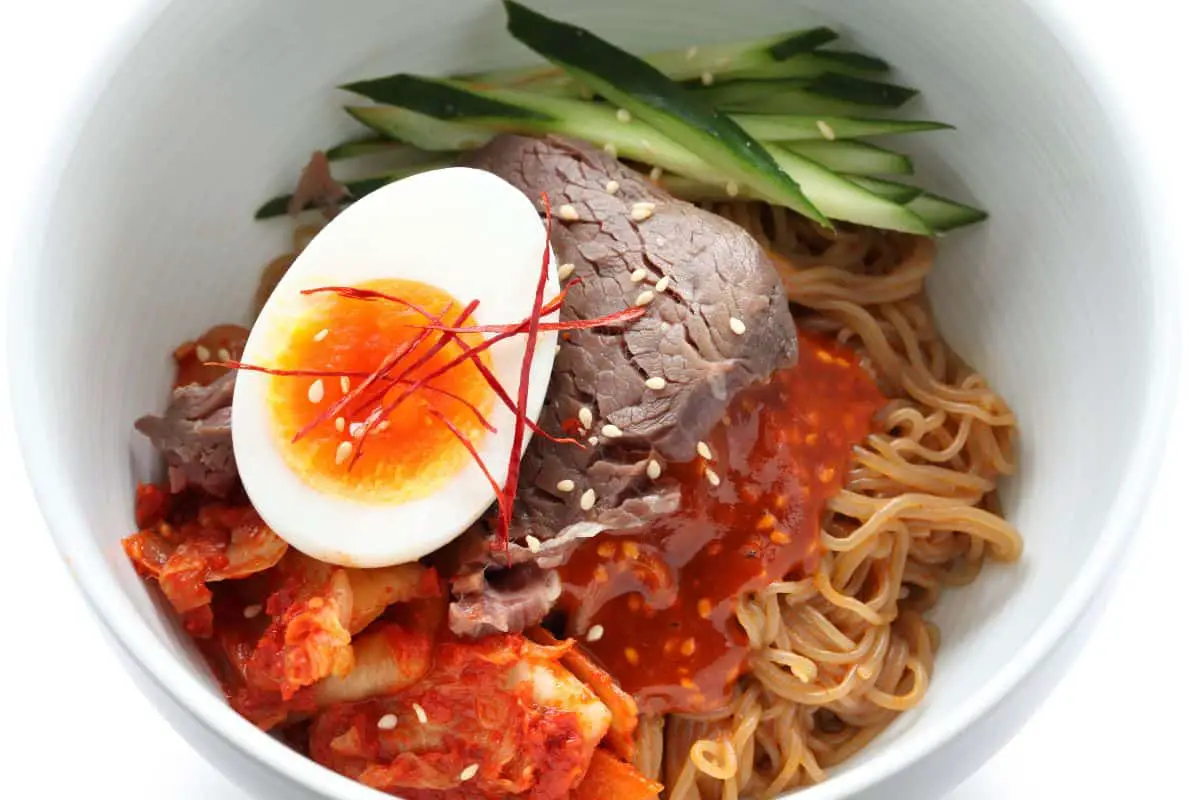
🔪 Ingredients and Preparations
Typical Ingredients for Naengmyeon
In Korean cuisine, you'll notice a focus on fresh, healthy ingredients and careful seasoning. Naengmyeon, a refreshing cold noodle soup perfect for summer days, boasts a unique set of ingredients.
You’ll need buckwheat noodles, a broth typically made from beef or dongchimi (radish water kimchi), and flavor enhancers like vinegar and mustard. Toppings often include cucumber, Korean pear, boiled egg, and Korean radish, all adding freshness and crunch to your bowl.
Making naengmyeon at home involves a balance of tang and umami, with ingredients like sugar and salt to taste. For additional spice, gochugaru (Korean red pepper flakes) or mustard sauce can be mixed into the chilled broth.
Typical Ingredients for Kalguksu
kalguksu features hand-cut wheat flour noodles swirled in a hearty, homemade broth. This soup often stars a rich stock that can be derived from anchovy, shiitake mushrooms, or beef brisket. Seasoning is simple yet essential; soy sauce, garlic, and salt are usually added.
The dish is garnished with green onions, toasted sesame seeds, and sometimes sesame oil for added depth. To prepare kalguksu, you'll start by making the noodles from scratch, then simmer everything to achieve a savory and deeply comforting flavor palette.
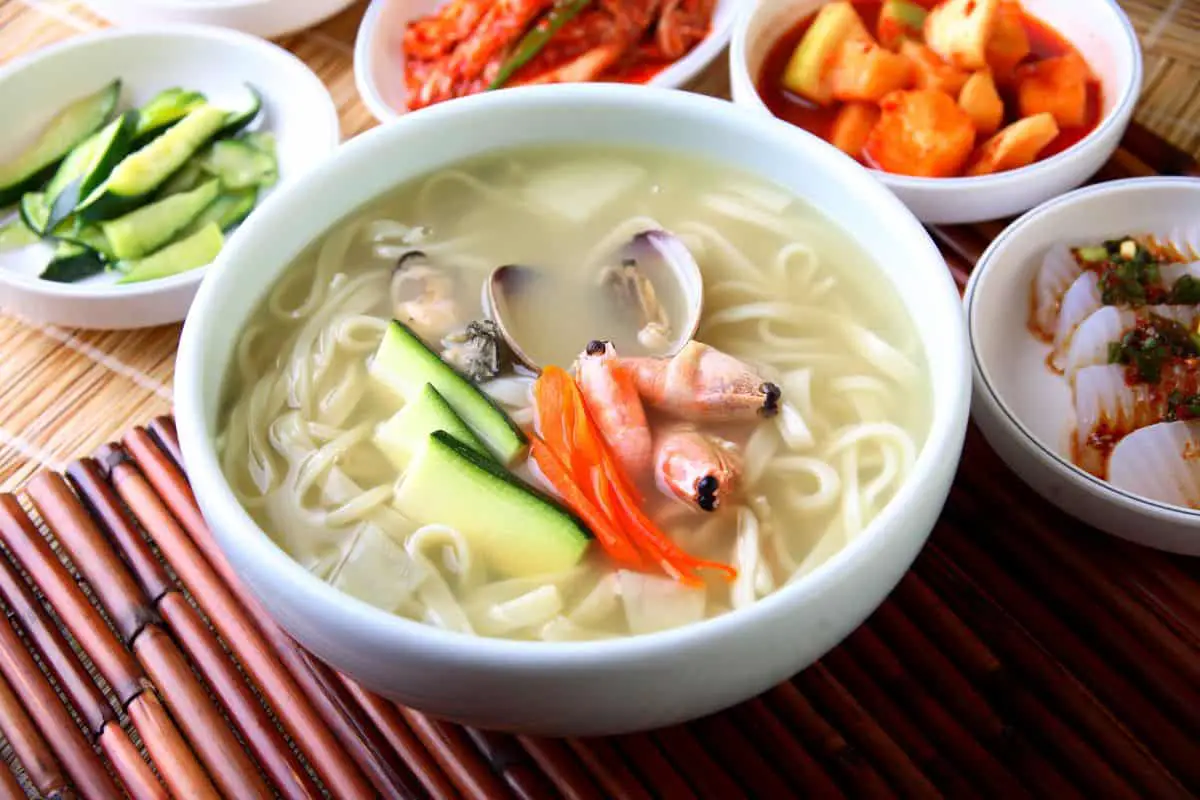
🥢 Naengmyeon Preparation
Making the Broth
Your naengmyeon experience starts with the broth. You’ll want to simmer beef and traditional aromatics for a couple of hours to develop a rich flavor. Once it’s ready, it's important to chill it until it’s icy cold, and serve it over crushed ice once ready.
For an authentic flavor, add a whisper of vinegar and a hint of sugar to balance the flavors. If you're curious about how to perfect the broth's taste, check out this recipe for naengmyun.
Preparing the Noodles
Naengmyeon noodles should be chewy, so cook them according to the package instructions— usually until they’re just tender. Rinse them under cold water to stop the cooking and give them a good chewy texture.
This naengmyeon noodles recipe is a great resource for guidance on the noodle-cooking process.
Assembling the Dish
It's time to assemble your cold noodle masterpiece. Place your cooked noodles in a bowl, pour the chilled icy broth over them, then top with cucumber slices, a boiled egg, and a sprinkle of green onions.
Don’t forget a dollop of spicy sauce if you like a kick or a splash of vinegar for extra tang.
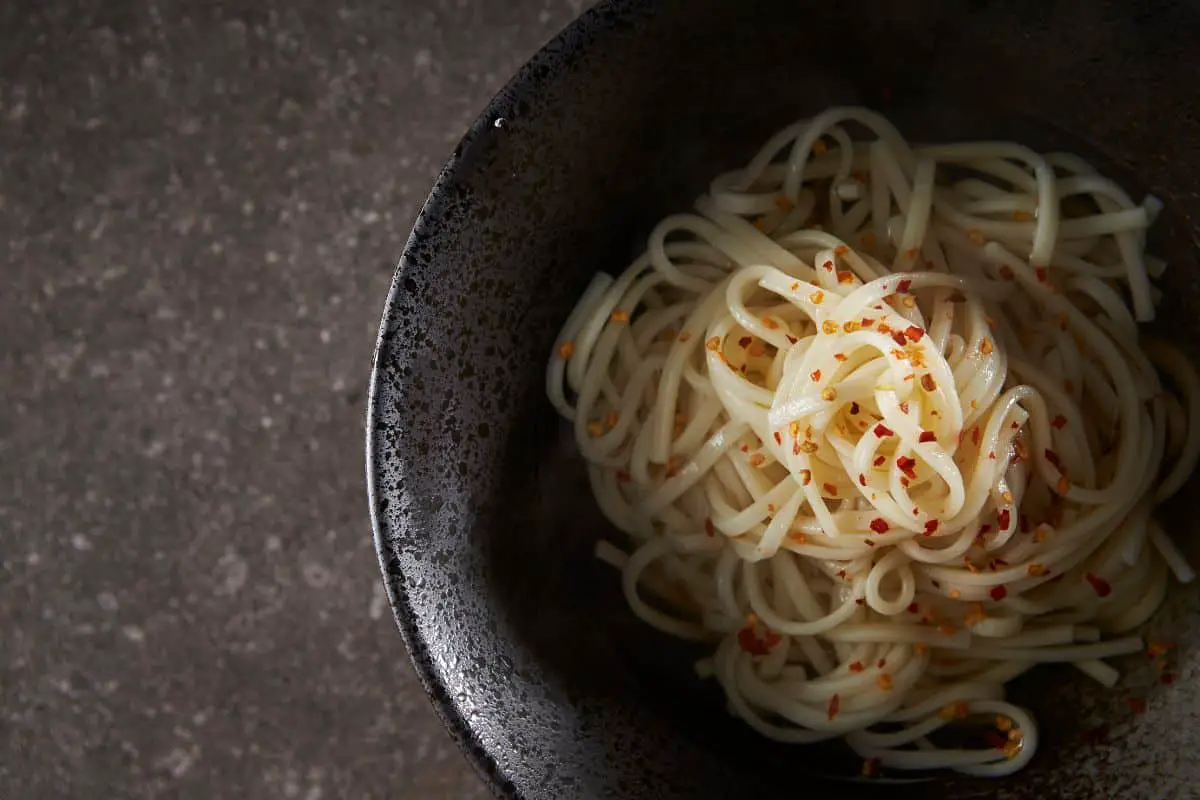
👨🍳 Kalguksu Preparation
Making the Broth
Creating a delicious bowl of kalguksu is all about the foundation of a savory broth, the freshness of the hand-cut noodles, and the harmony of ingredients coming together. You'll start by simmering anchovies and kelp to make a flavorful stock.
Season your broth with soy sauce, and don't forget to add fresh minced garlic for that aromatic kick. The base of your soup, often a beef broth, provides depth and a robust backdrop for the vegetables.
Preparing the Noodles
Kalguksu noodles are the star, so you'll want to knead your dough until it's smooth. Roll it out thinly, then slice it into wide, chewy strands. Boil these noodles just right— ensuring they're tender with a slight bite.
Assembling the Dish
Now, you'll simmer the carrot and zucchini until slightly softened. Lay the cooked noodles in your bowl and ladle the hot broth over them. Finish with a sprinkle of green onion, a drizzle of sesame oil, and toasted sesame seeds for a complete, comforting meal.
😋 Serving and Pairing
Presentation Tips for Naengmyeon
Naengmyeon, a refreshing one-pan Korean dish, pops with a topping of a hard-boiled egg cut neatly in half. Arrange slivers of cucumber and Asian pear for a fresh crunch.
Add a personal touch with a drizzle of vinegar and a dash of sesame seeds to bring out a spicy yet tangy flavor. It's all about balancing the cold, chewy texture with vibrant, appetizing garnishes.
Presentation Tips for Kalguksu
Your bowl of kalguksu will come to life with a generous sprinkle of green onions and a light dusting of sesame seeds over the top.
The broth, rich with beef stock, cradles the soft, hand-cut noodles and comforts you with every spoonful. Don't forget to refrigerate the broth beforehand for that perfectly chilled texture, with garnishes adding a final flair to this hearty meal.
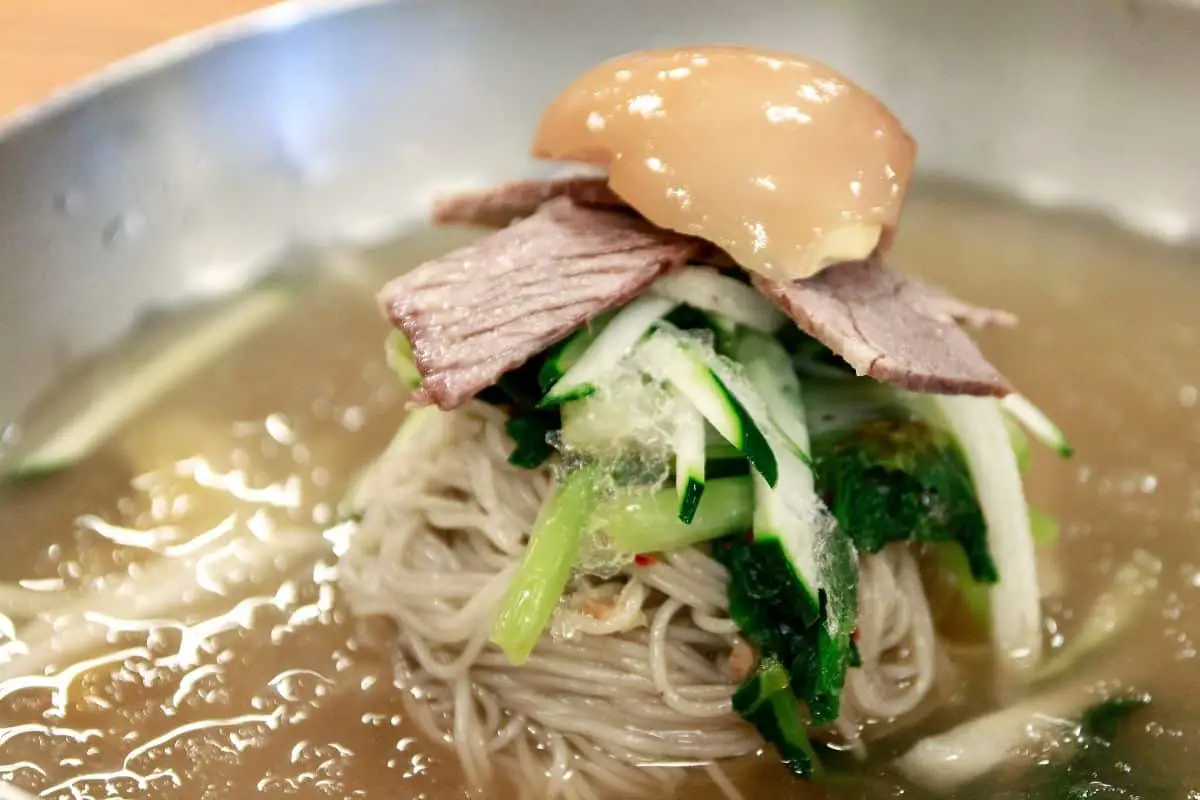
🥣 Pairing and Side Dishes
When you're enjoying naengmyeon, a Korean cold noodle dish, pair it with pickled radish for a refreshing crunch. A slice of sweet Korean pear complements the tangy bite from the radish, balancing your taste buds.
Kalguksu, heartwarming knife-cut noodle soup, goes perfectly with sides that cut through the soup's richness. Kimchi, with its bold flavors, is a classic choice, offering a spicy and sour kick that you'll love alongside the mild broth.
My favorite pairing for naengmyun or kalguksu, however, is Korean BBQ meats like fresh pork belly or bulgogi. All of the sauces for KBBQ and the other Korean side dishes pair really well with both noodle dishes, though I always prefer cold noodles for pairing with hot, fresh-cooked meats.
🌏 Regional Variations
In Korea, you'll encounter delicious regional spins on both naengmyeon and kalguksu. Let's start with naengmyeon - first you've got the spicy bibim naengmyeon with its tangy gochujang dressing, mostly loved in the Southern part of the country. Up North, the preference leans towards mul-naengmyeon, a refreshing bowl served in a chilled broth.
As for kalguksu, this comforting dish varies greatly, too. In coastal areas, folks often enjoy it brimming with fresh seafood. Inland, you might find kalguksu in a heartier, chicken-based broth. Here's a taste of how diverse Korean noodles can be:
- Bibim-naengmyeon: Spicy and tangy, a Southern favorite.
- Mul-naengmyeon: Served cold with chilled broth, beloved in the North.
- Seafood kalguksu: Coastal regions add shrimp, clams, and more.
- Chicken kalguksu: A richer broth with tender chicken pieces found inland.
Every region puts its unique stamp on these dishes, so you’re in for a treat no matter where you go in Korea.
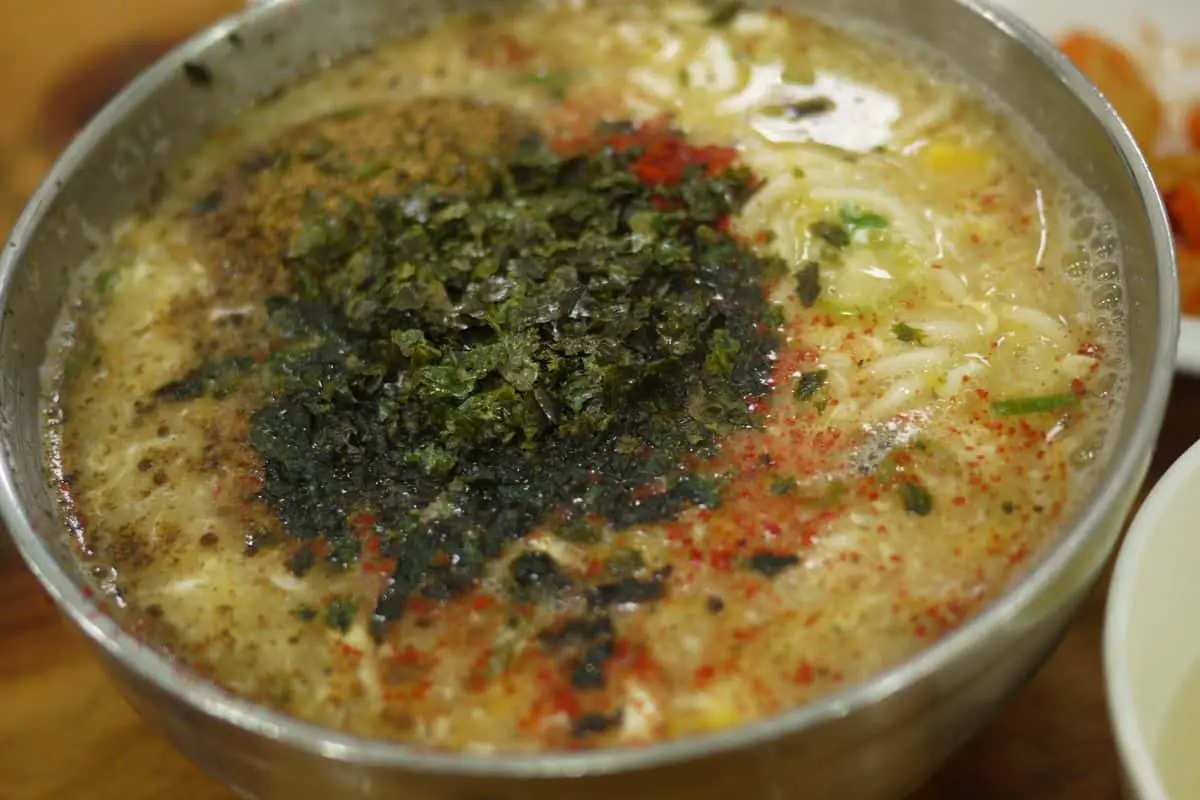
🥡 Storage and Leftovers
When you've had your fill of naengmyun, make sure to stash the leftovers in the refrigerator quickly. The key is to keep the noodles separate from the broth to avoid them becoming soggy. Transfer the noodles into an airtight container and pour the broth into another; both can be refrigerated for up to two days.
For kalguksu, the noodles absorb liquid rapidly. If you've got leftovers, it's best to store the broth and noodles separately to maintain their texture. The broth can stay in the fridge for 3-4 days, while the noodles are best eaten within the next day or two to enjoy their chewiness.
Remember, you'll want to give the broth a good stir before serving it again, to redistribute the flavors evenly. Enjoy your meal the second time around!
🙋 Frequently Asked Questions
Naengmyeon is a cold noodle dish made from buckwheat and potato or sweet potato starch, and sometimes wheat flour. In contrast, kalguksu features chewy, wheat flour noodles that are cut by hand.
Naengmyeon noodles are served in an ice-cold broth with a sweet and tangy taste, mixed with julienned vegetables. Kalguksu is prepared in a hot, savory broth usually including vegetables and meat or seafood.
Naengmyeon has an overall refreshing, slightly sweet, and tangy profile, with a hint of heat from mustard or vinegar. However kalguksu offers a comforting warmth, rich in flavors from its anchovy or chicken-based broth.
You'll often find naengmyeon served on hot summer days or after a hearty meal to cleanse the palate. Kalguksu is perfect for cooler weather or when you're craving a filling, homestyle dish, and is more commonly made in Korean homes in the wintertime.
Yes, beyond mul-naengmyeon and bibim-naengmyeon you'll encounter Pyongyang and Hamhung styles of naengmyeon, with variations there in sauce and toppings. Kalguksu doesn't vary as much, but regional ingredients can influence its broth type and garnishes.

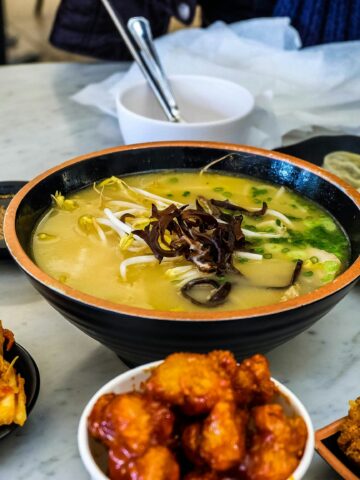
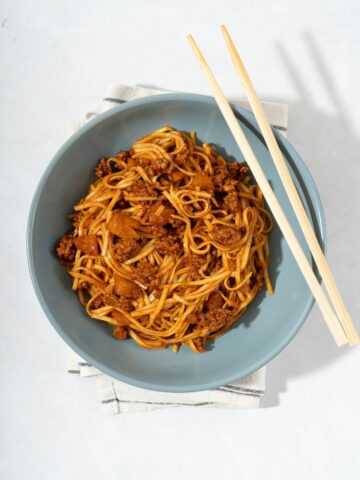
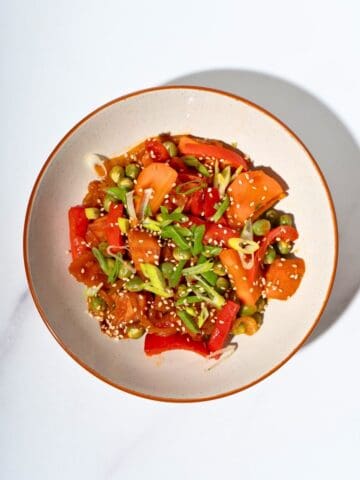
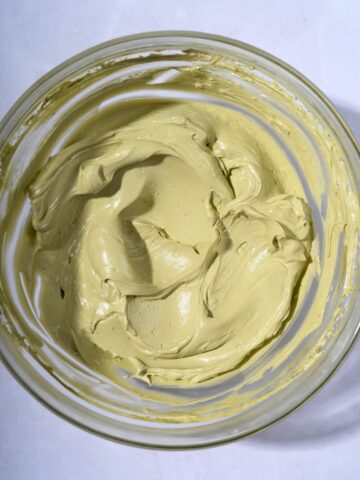
Comments
No Comments